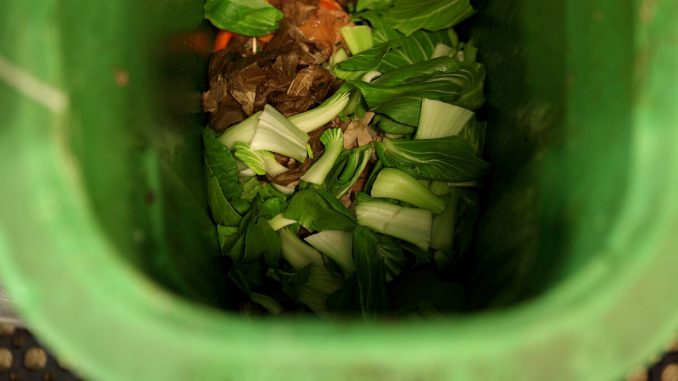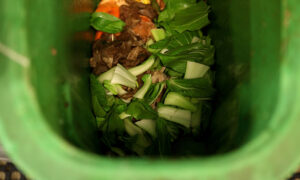

Cities throughout California are gearing up to meet goals for reducing organic waste, and especially edible waste. The goals were set for the coming years by a 2016 state law.
The state aims to reduce organic waste in landfills by 75 percent by 2025, and save food from going to the landfill—a 20 percent reduction of edible waste. The idea is to recover that wasted food for food-insecure Californians, approximately one in eight adults and one in five children in the state.
Bracken’s Kitchen in Garden Grove, Orange County, is a non-profit helping the city work toward these goals locally. The 2016 law, Senate Bill 1383 (SB 1383), requires all jurisdictions to establish food recovery programs and partner with organizations such as Bracken’s.
Bill Bracken, a nationally recognized gourmet chef with ties to Orange County, the formation of Bracken’s Kitchen was a direct result of Bracken’s volunteer work with the Orange County Rescue Mission, where he witnessed first-hand the severe food insecurity people were facing. He knew he had to do something to address the issue head on, and hands on.
In the first quarter of 2021, Bracken’s Kitchen rescued more than 89,000 pounds of food from landfills. It reports the recovery of edible waste to city authorities, detailing how much was collected from each restaurant or food establishment. City authorities then report it to CalRecycle.
Second Harvest Food Bank of Orange County reports more than 450,000 at risk of going hungry each month in the county.
Bracken says his desire to stem food waste was as much about feeding the hungry as his belief that precious food resources be used to the full extent of their intended purpose.
“If we are going to slaughter a cow, we in the food industry have an obligation to use as close to 100 percent of the animal for its intended purpose,” Bracken told the Epoch Times.
“It’s estimated that 40 percent of our food is thrown away or underused, why kill an animal and only use 60 percent of its nutritional and resource value?”
“There is tremendous waste in our industry, but there are creative ways that we can work to mitigate that waste, and yes, feed our food insecure at the same time.”
Bracken looks at SB 1383 as a way to raise awareness among restaurateurs and those in the food industry to create positive paradigm shifts. He pointed to changes resulting from the COVID-19 shutdowns, and how food and supplies are now counted by restaurants struggling to hang on to every penny.
As an example, prior to the COVID-19 shutdowns, a restaurant might automatically throw a handful of catsup packets in with a bag of fries. Today, if not requested, those extras aren’t automatically handed out with food orders, saving the restaurant on costs and reducing waste at the same time.
“I look at it being less about landfill diversion and more about not creating that waste in the first place,” Bracken said. “This can be done by utilizing resources creatively and responsibly, to the fullest extent possible.”
Bracken’s Kitchen provides food recovery, culinary training, and community feeding programs through a partnership with Abound Food Care (formerly Waste Not OC), Chefs to End Hunger, and various food banks. These organizations facilitate the solicitation and collection of food from a variety of sources and provide them to Bracken’s Kitchen for preparation and distribution.
Bracken’s Kitchen takes a three-pronged approach with its foundation in recovering food waste.
It educates food producers and other businesses about their social responsibility to save food that would be wasted—and the tax benefits of doing so. Much food is tossed, for example, because it is cosmetically flawed or close to expiry.
Bracken recovers that food, and uses it for free culinary training classes. This gives people vocational skills that can help them with employment. And, of course, the meals made with the recovered food feed hungry bellies.
Organic waste—including food, paper, and lumber—is the largest waste stream impacting California’s landfills, according to CalRecycle. In 2017, Californians disposed of 27 million tons of organic waste, including 6 million tons of edible waste.
Starting in 2022, under mandate by SB 1383, all jurisdictions statewide will have to provide organic waste collection services to residents and businesses. The collected organic materials will be used either in anaerobic digestion facilities that generate energy, or in composting facilities.





Be the first to comment